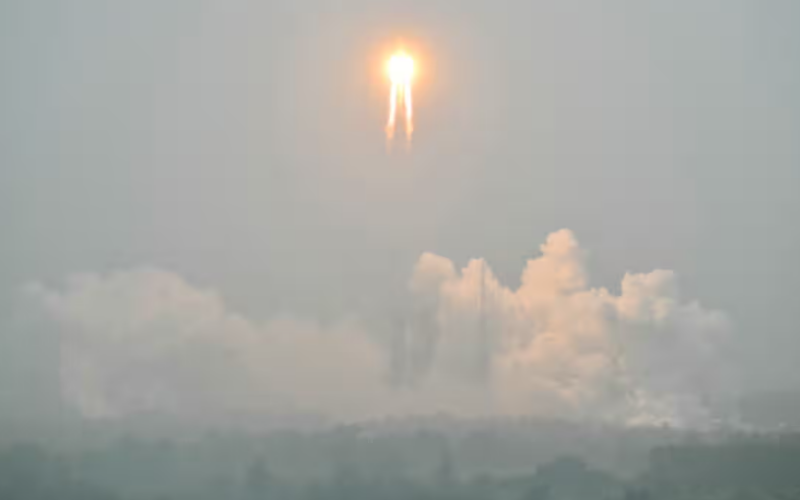China has embarked on a significant mission to explore the far side of the moon, marking a major milestone in its ambitious space exploration program. The uncrewed Chang’e-6 mission is a crucial step towards China’s goal of landing a human on the lunar surface by 2030, demonstrating the country’s growing capabilities in space exploration.
The Chang’e-6 mission, named after the Chinese moon goddess, is part of China’s broader lunar exploration program, which aims to further our understanding of Earth’s natural satellite and pave the way for future manned missions. The mission’s objectives include studying the lunar surface, collecting samples, and conducting scientific experiments.
The far side of the moon, often referred to as the “dark side,” is relatively unexplored compared to the near side, which has been extensively studied by previous missions. The Chang’e-6 mission represents a rare opportunity to explore this enigmatic region and uncover valuable insights into the moon’s geology, composition, and history.
China’s space program has made impressive strides in recent years, with successful missions to the moon, Mars, and beyond. The country’s ambitious goals include establishing a permanent space station, sending astronauts to the moon, and eventually launching a crewed mission to Mars.
The Chang’e-6 mission builds on the success of previous Chinese lunar missions, including the Chang’e-4 mission, which made history by successfully landing on the far side of the moon in 2019. The mission’s success demonstrated China’s technological prowess and its commitment to advancing space exploration.
China’s space ambitions have not been without controversy, with some critics expressing concerns about the country’s growing influence in space and its potential military implications. However, China has maintained that its space program is peaceful and aims to benefit all of humanity through scientific discovery and technological innovation.
As the Chang’e-6 mission progresses, the eyes of the world will be on China as it seeks to unlock the mysteries of the moon’s far side. The mission represents a significant step forward in humanity’s quest to explore and understand the cosmos, highlighting the importance of international collaboration and cooperation in advancing our knowledge of the universe.








